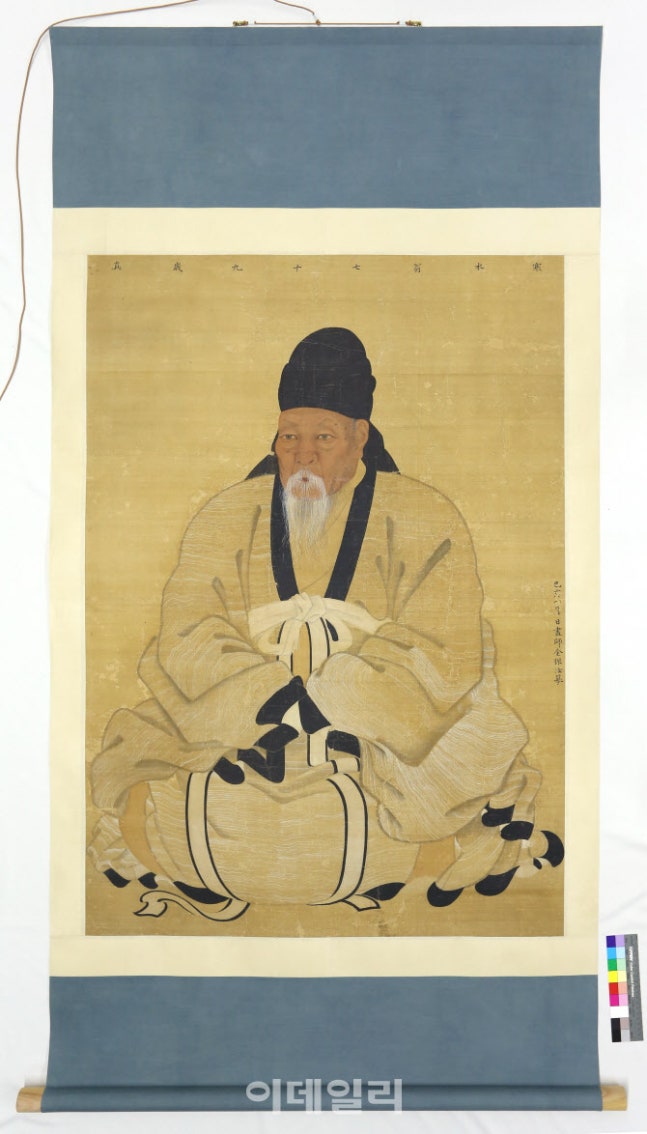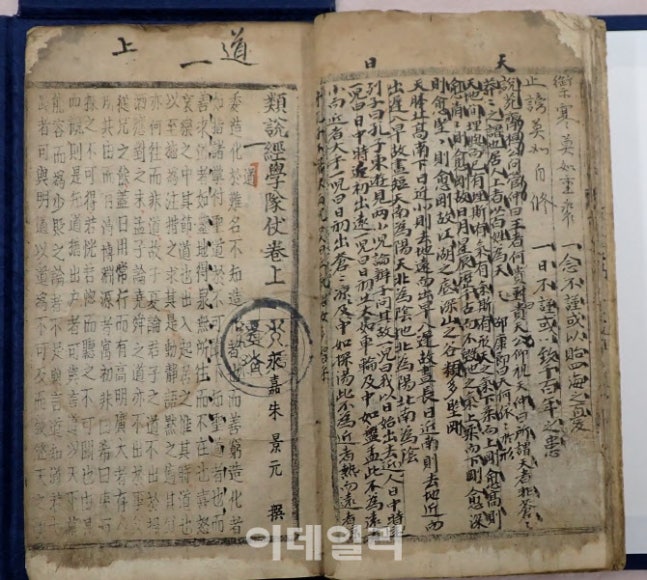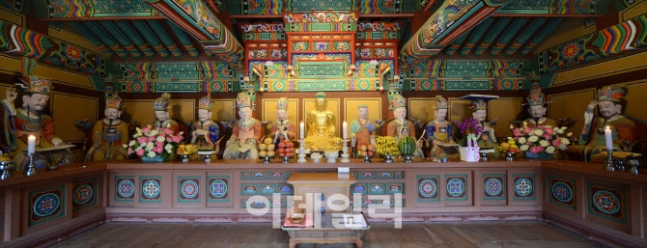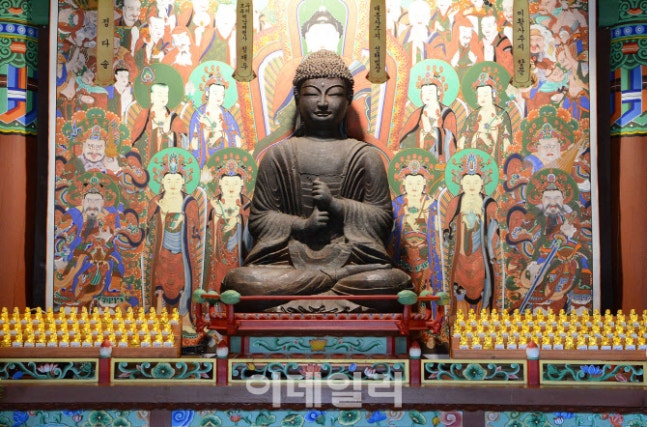, “The Cultural Heritage Administration (Director Choi Eung-cheon) designated four items as national designated cultural heritage treasures, including the ‘Portrait of Kwon Sang-ha’ by the Pyongyang-born painter Kim Jin-yeo (1675~1760) who participated in creating the portrait of King Sukjong. This was announced by the agency on the 22nd.”,
,
, ‘The ‘Portrait of Kwon Sang-ha’ depicts Kwon Sang-ha (1641~1721), who is recognized as a true heir of Confucian scholarship under Song Si-yeol (1607~1689). The portrait has been enshrined at the Hwanggangyeongdang in Jecheon for over 300 years and is currently held by the Uirimji History Museum.’,
,
, ‘At the top of the painting, it is written ‘한수옹(권상하) 79세 진영’, indicating that the subject of the portrait is Kwon Sang-ha at the age of 79. In the middle right, it reads ‘기해사월일 화사김진여모’, signifying that the painter Kim Jin-yeo, who participated in painting Sukjong’s portrait, created it in 1719 (during Sukjong’s reign).’,
,
, ‘Kim Jin-yeo utilized a painting technique that relied on soft brushstrokes and line shading rather than traditional portrait methods, highlighting the three-dimensional appearance and realism by illuminating the convex parts of the face. Line shading refers to a technique where ink or color is applied over water on the canvas before it dries to achieve a subtle expressive effect.’,
,
,
, “The Cultural Heritage Administration also designated ‘Yuseolgyeonghakdaejang’, ‘Yeonggwang Bulgapsa Wooden Bodhisattva Triad and Sakyamuni Statues with Clothing Artifacts’, and ‘Eunjeoksa Cheoljobirojanabulsawon’ as treasures.”,
,
, “‘Yuseolgyeonghakdaejang’ from Sungkyunkwan University’s Jonggak Hall collection is a book that records the contents of Confucian studies by category. It summarizes the contents of 148 items that were used for examinations in the past. Compiled by the Chief Examiner of the Ming Dynasty named Junggyeongwon, the book consists of three volumes: upper, middle, and lower.”,
,
, ‘It is characterized by being a block-printed edition of Gyungjaja (庚子字) metal type, the smallest size of Soja (小字) among Gyungja characters, made of bronze in 1420 (during King Sejong’s reign). This is considered an important resource for research on early printing and bibliography in the early Joseon Dynasty. Among the Gyungja characters, this edition is unique as it prints the entire text using Soja.’,
,
,
|
|
| Yeonggwang Bulgapsa Wooden Bodhisattva Triad and Sakyamuni Statues with Clothing Artifacts |
|
, “The ‘Yeonggwang Bulgapsa Wooden Bodhisattva Triad and Sakyamuni Statues with Clothing Artifacts’ includes 27 statues, including Jijang Bodhisattva, Muryanggwangwang, Domyeongson, and Sakyamuni, completed by various sculptors in 1654 (during King Hyojong’s reign) and enshrined at Bulgapsa temple. These statues retain the complete original form from the time of creation, providing valuable evidence for understanding late Joseon Buddhist beliefs and sculpture.”,
,
, ‘Furthermore, the work is highly valued for showcasing the distinctive stylistic characteristics of sculptor Muyeom while based on the style of sculptor Muyeom, and for studying their transmission. ‘,
,
,
|
|
| Eunjeoksa Cheoljobirojanabulsawon |
|
, “The ‘Eunjeoksa Cheoljobirojanabulsawon’ piece reflects the style of the 9th-century Silla era, featuring a round face, realistic body proportions, and the pose of Jigweon holding up the index finger with the left hand while wrapping the right hand around. This statue, created at the transition from gold to iron statues, is considered historically significant for being an early iron statue from that period.”,
,
, ‘Iron statues are typically produced using the split-casting method, which inevitably creates casting marks. However, this statue appears to have minimized such marks by carefully connecting the mold along the vertical garment seam and other technical considerations. Despite some damage to the knees over time due to historical trials, the statue remains largely intact without major flaws, representing an outstanding Buddhist statue embodying the aesthetics and artistry of the late Silla and early Goryeo periods.’,
,
, ‘The Cultural Heritage Administration stated, “We plan to systematically preserve and utilize the four designated treasures by actively cooperating with the relevant local governments, owners, and managers.”‘,
,
,
Visited 2 times, 1 visit(s) today





